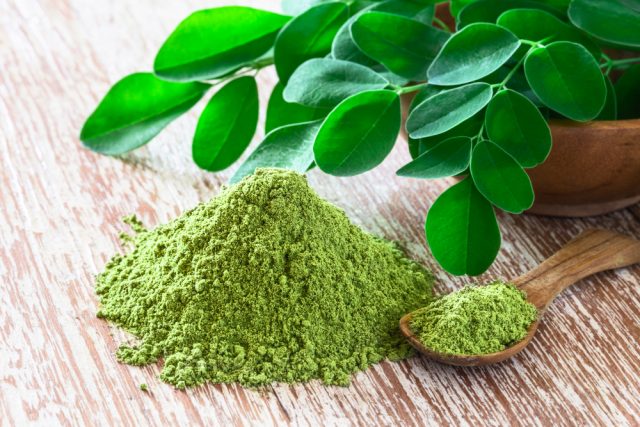Kratom is making waves, and rightfully so; it is natural and has healing qualities. Mainly praised as a mood enhancer, energy booster, pain reliever, and opioid withdrawal antidote.
When administered in low doses, it acts as a stimulant for those with low energy, and in high doses, it is a pain reliever but can be overdosed and be dangerous. Let us tell you the precautions to follow while taking kratom for pain relief.
What is Kratom?
Native to Southeast Asia, Kratom (Mitragyna speciosa) is a tropical, evergreen, and herbal tree. They are most commonly found in Thailand, Malaysia, Indonesia, Myanmar, and the regions of Papua New Guinea. Kratom’s use in herbal medicine dates back to the 19th century.
Kratom was first used as a stress reliever by Thai and Indonesian farmers to take the edge off after long hours working in the field. They would either chew leaves, use them in tea, or smoke them. Its stimulant-type impact keeps stress levels at bay and alleviates exhaustion and fatigue. Natives still use kratom leaves to treat diseases like diabetes, diarrhea, common cold, or fever. There has not been any definitive proof that kratom helps cure those ailments, but the slight pain-relief effects help the sufferer.
In rural Southeast Asian villages, they consider kratom as an opioid substitute.
In recent times, however, Kratom is found to contain opioid properties, and because of similar excitant characteristics, it can be used as a withdrawal antidote. Katom also works as a pick-me-up for those who struggle with low energy and stress. At the same time, a slightly higher dose can significantly reduce pain.
Types of Kratom
The Kratom tree is divided into three types: Red Vein Kratom, White Vein Kratom, and Green Vein Kratom. Each of those veins produces many strains that provide different effects. Let’s take a look at some of the different strains that are most common today.
Red Vein Kratom
The most popular strain of all, this has excellent pain-relieving properties. This strain of kratom is also great for those struggling with sleep. Besides the regular use of kratom relieving pain and elevating mood, the red vein strain of kratom has proven to improve brain functions slightly.
White Vein Kratom
There are different types of white vein kratom, White Thai Kratom, White Sumatra Kratom, and White Vein Indo Kratom. It is best used to boost energy levels, clear mind fog can help decrease stress, and acts as an excellent pain-killer.
Green Vein Kratom
A milder, more reserved cousin of the white vein kratom, this is a more subtle strain of the kratom family. The green vein has the same effects as the white vein, it elevates energy, increases mental clarity, reduces stress, and relieves pain.
Some Other Types
- The Red Borneo Kratom has incredible sedative effects, almost like green vein kratom, because of its subtlety on impact. It relieves pain, stress, and anxiety and helps with amnesia and low energy levels.
- The lesser-known yellow vein kratom is often believed to be a processed version of the white vein strain. They have the same effects as the others: energy enhancement, stress relief, mental clarity and increasing focus and concentration.
- Maeng Da Kratom is another strain that is pretty popular in the kratom fanbase. This strain is praised for its antidepressant properties, mood elevation, pain relief, anxiety, stress reduction, and the usual energy boost.
- Sumatra, named after the Indonesian island, is another strain that bodes very well for those with an imbalance of stress levels and a wonky sleep cycle. The effects of this strain have been seen to last longer than most other Kratom strains, and it is best for those seeking calmness for the whole day.
Uses of Kratom
As discussed above, kratom’s main use is pain relief and reducing stress and fatigue among the other health benefits of kratom. While those are the primary areas where kratom works best, there are other uses for kratom. Take a look at what they are,
- Diarrheal symptoms
- Fever, common cold, headaches
- Muscle relaxer
- Combat depression
- Alzheimer’s
- Diabetes
- Weight control
- High blood pressure
- Promote sexual health and performance
- Heart disorders
How Can You Consume Kratom
From what we’ve learned, Kratom leaves can be stewed in tea, chewed, and smoked. Nevertheless, today kratom is consumed in two main forms, powder and tablet. Of course, you can utilize the leaves like the villagers, but it would be complicated.
Kratom has an earthy taste which can taste unpleasant, so it can be mixed with other flavors to mask the taste. Let’s dive a little deeper into the forms of kratom widely consumed,
- In powder form: Kratom leaves are processed and crushed to form a powder. This can be consumed by mixing it with water.
- In tablet form: Kratom is also found in tablet or capsule forms.
- As a cream or lotion: Kratom creams are available in the market to use on the skin as a calming salve or emollient.
Side Effects of Using Kratom
The side effects of using kratom can vary from mild to drastic pretty quickly. So it is wise for any consumer to try out kratom for its pain-relieving effects and research what they can expect from this controversial drug.
- Weight loss: Kratom suppresses appetite, resulting in rapidly decreasing weight.
- Nausea: A common symptom among those consuming kratom.
- Dry mouth
- Recurring Urinary Tract Infections (UTI)s.
- Constipation
- Insomnia
- Deteriorating liver functions.
While these don’t seem serious enough, the use of Kratom has also been linked to these side-effects below, (based on one or more events)
- Addiction
- Hallucinations
- Breathing difficulties
- Distorted vision and mental functions
- Seizures
- Coma
- Death
Precautions to Follow While Taking Kratom
From the widely varying side effects of kratom, it is only wise that consumers are cautious before and while taking this drug. Therefore, we’ll tell you some of the smartest precautions to take while taking kratom.
- Dosage is the most crucial factor in preventing any potential dangers from Kratom. Therefore, lower doses are always the best idea to start with, and it should only be increased upon consultation with a doctor.
- If you have any mental health disorders, it is best to consult your doctor before consuming kratom.
- Kratom is advised never to be taken with alcohol, as those with alcoholism have reduced self-esteem and, with kratom added, may become more suicidal.
- If you’re pregnant or breastfeeding, it is best not to take kratom.
- It is best not to combine it with caffeine if taken in powder form, as caffeine enhances the effects of other stimulants.
- Patients with epilepsy should avoid kratom as it can increase the risk of seizures and hamper motor functions.
- Kratom increases heartbeat and can worsen symptoms of heart disorder(s)
Conclusion
Due to minimal research, there is not much information supporting the claims made. Kratom still has a long way to go in medical science, and progress is being made in little steps. Consult a medical professional before popping another kratom pill or drink a kratom protein smoothie.
FAQs
1. Is Kratom Addiction Easier to get Rid of?
Ans: Any addiction is cause for concern. Kratom addiction is no better than other addictions, such as opium or heroin. Anyone consuming kratom should not overdose on it or take more than prescribed. Kratom addiction is not easier to get over, and research suggests that consumers experience kratom withdrawal symptoms upon stopping consumption. It also reveals that some experienced substance use disorder symptoms after using kratom. Despite the numbers being significantly less than that of opioid or heroin addicts, the use of kratom still poses a threat nonetheless. So users need to be more vigilant when it comes to taking it.
2. Is Kratom used to Substitute Opioid Addictions?
Ans: U.S Food and Drug Administration (FDA) never approved the use of kratom as a substitute for opioid addiction. But it turned out that kratom’s opioid-like properties became the reason why users were exposed to addiction risks. FDA claimed to have received concerning reports about the safety of kratom use. Kratom has been under investigation and has been deemed unsafe and ineffective. It has warned consumers not to use kratom products or supplements in hopes to battle opioid addiction. The FDA continues to urge more research on the effectiveness of kratom and when it is used in conjunction with other drugs. So be vigilant.
3. Are there other Supplements I can take that Mimic the Effects of Kratom?
Ans: There are several supplements in the market for stress relieving and calming effects. Supplementing has proven to promote overall well-being, boost energy, ease stress, relax muscles, relieve pain, and provide mental clarity for enhanced motor functioning. There is a world of supplements that all promise different benefits and advantages. However, it is difficult to settle on the right ones for you; we can’t blame you; there are so many! You must choose a great supplement brand that will help keep you feeling well. We’re linking some great pain-relief supplements to help you keep your health in check!

Speaks from heart, always too passionate and driven by emotions. Spins the words with kindness & sharpness, intriguing your ever-inscrutable minds.




